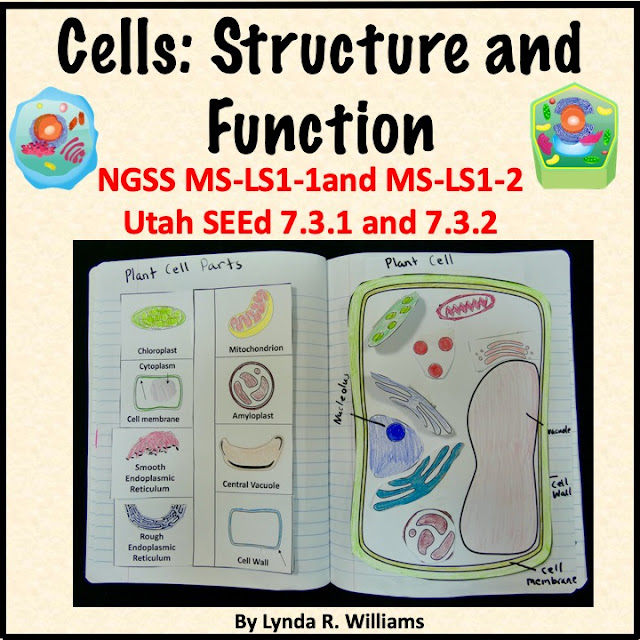Cells Parts and Function Middle School Structure and Function Worksheets and Activities for Middle School Science
This unit has great cell activities for middle school. Students will learn about cell parts and functions. Making a model of animal and plant cells is a great start to discussing structure and function within cells.
Interactive notebook flaps can be used to record the function of each part of the cell. Students will learn the difference between plant and animal cells. Students will compare plant and animal cells. This unit is perfect for Middle School NGSS and 7th grade Utah SEEd Study of cells and cell parts and function and making a model of a cell. Human Systems is also a middle school standard. You can address Human Systems with one of these science units.
Students will love this cell model project.
There are smaller pieces that makeup cells such as organelles. A mitochondrion is an example of an organelle. Cells can also connect to form larger structures. They might group together to form the tissues of the stomach and eventually the entire digestive system. However, in the same way, that atoms are the basic unit when you study the matter, cells are the basic unit for biology and organisms.
Students will love this cell structure and function worksheets.
In larger organisms, the main purpose of a cell is to organize. Cells hold a variety of pieces and each cell type has a different purpose. By dividing responsibilities among different groups of cells, it is easier for an organism to survive and grow.
Aligned with these standards for Middle School Science
NGSS MS-LS1-1. Conduct an investigation to provide evidence that living things are made of cells; either one cell or many different numbers and types of cells. [Clarification Statement: Emphasis is on developing evidence that living things are made of cells, distinguishing between living and non-living things, and understanding that living things may be made of one cell or many and varied cells.]
MS-LS1-2. Develop and use a model to describe the function of a cell as a whole and ways the parts of cells contribute to the function. [Clarification Statement: Emphasis is on the cell functioning as a whole system and the primary role of identified parts of the cell, specifically the nucleus, chloroplasts, mitochondria, cell membrane, and cell wall.] [Assessment Boundary: Assessment of organelle structure/function relationships is limited to the cell wall and cell membrane. Assessment of the function of the other organelles is limited to their relationship to the whole cell. Assessment does not include the biochemical function of cells or cell parts.]
This resource is aligned with Utah SEEd
Living things are made of smaller structures, which function to meet the needs of survival. The basic structural unit of all living things is the cell. Parts of a cell work together to function as a system. Cells work together and form tissues, organs, and organ systems. Organ systems interact to meet the needs of the organism. Standard 7.3.1 Plan and carry out an investigation that provides evidence that the basic structures of living things are cells. Emphasize that cells can form single-celled or multicellular organisms, and multicellular organisms are made of different types of cells. (LS1.A) Standard 7.3.2 Develop and use a model to describe the function of a cell in living systems and the way parts of cells contribute to cell function. Emphasize







